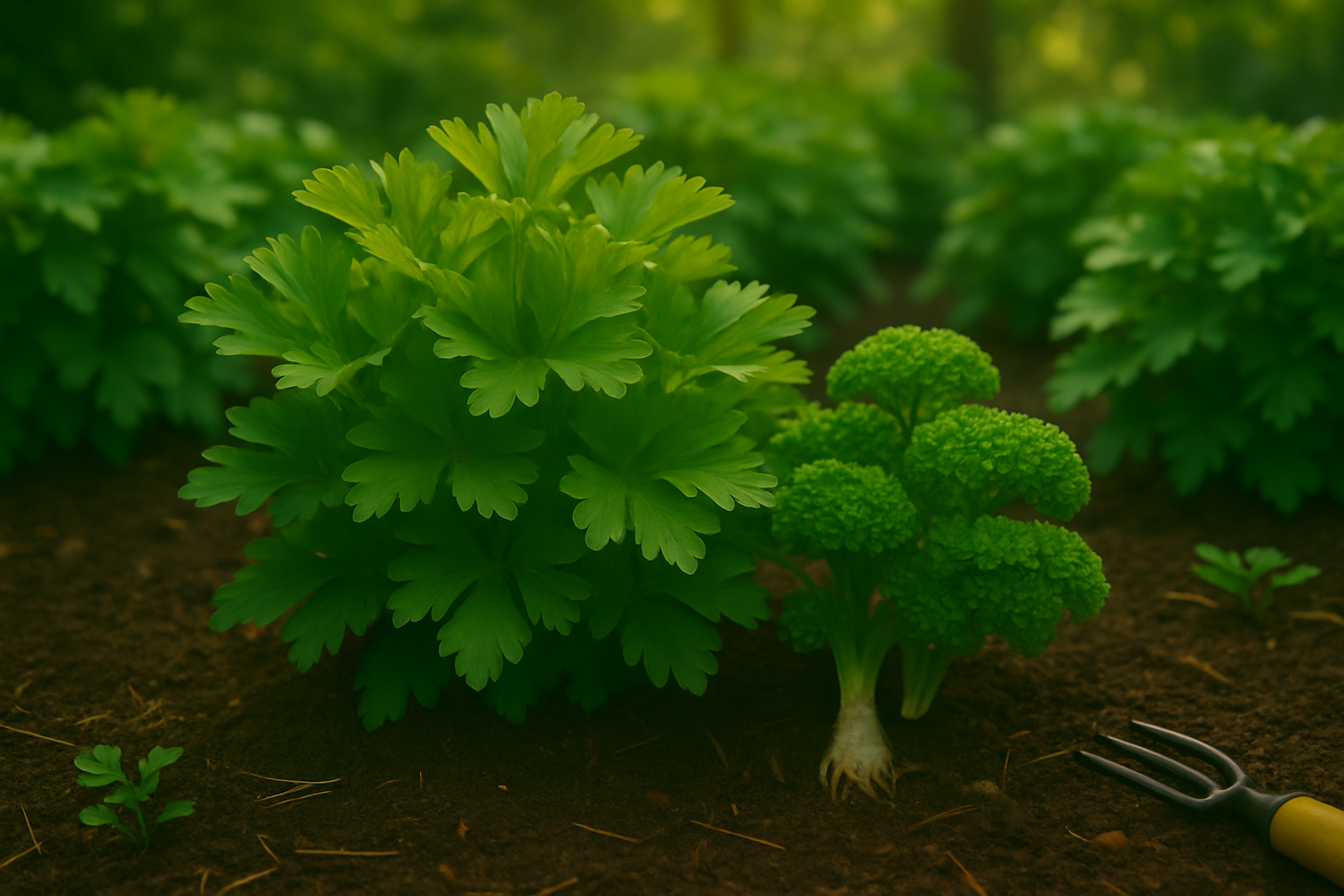Introduction to Growing Parsley Outdoors
Growing parsley outdoors is one of the most rewarding ways to add both flavor and greenery to your home garden. Parsley isn’t just a versatile herb that enhances everything from salads and soups to pastas and roasted vegetables—it’s also surprisingly easy to cultivate, even if you’re new to gardening.
With its fresh, slightly peppery taste, parsley pulls double duty: it serves as a garnish and a core ingredient in countless dishes around the globe. Plus, there’s nothing like snipping a handful of bright green leaves straight from your backyard before dinner!
The good news? Growing parsley outdoors doesn’t require a lot of space, complicated equipment, or advanced skills. Even a sunny spot in your garden bed or a large container on your patio will work.
In this guide, you’ll learn how to pick the right location, prepare your soil, plant seeds or seedlings, and care for your crop with smart watering, feeding, and harvesting tips. Whether you’re planning your first herb garden or looking to improve your herb-growing game, these essential steps will help you grow lush, healthy parsley outdoors for months of fresh, aromatic harvests.
Picking the Right Parsley Variety and Getting Started
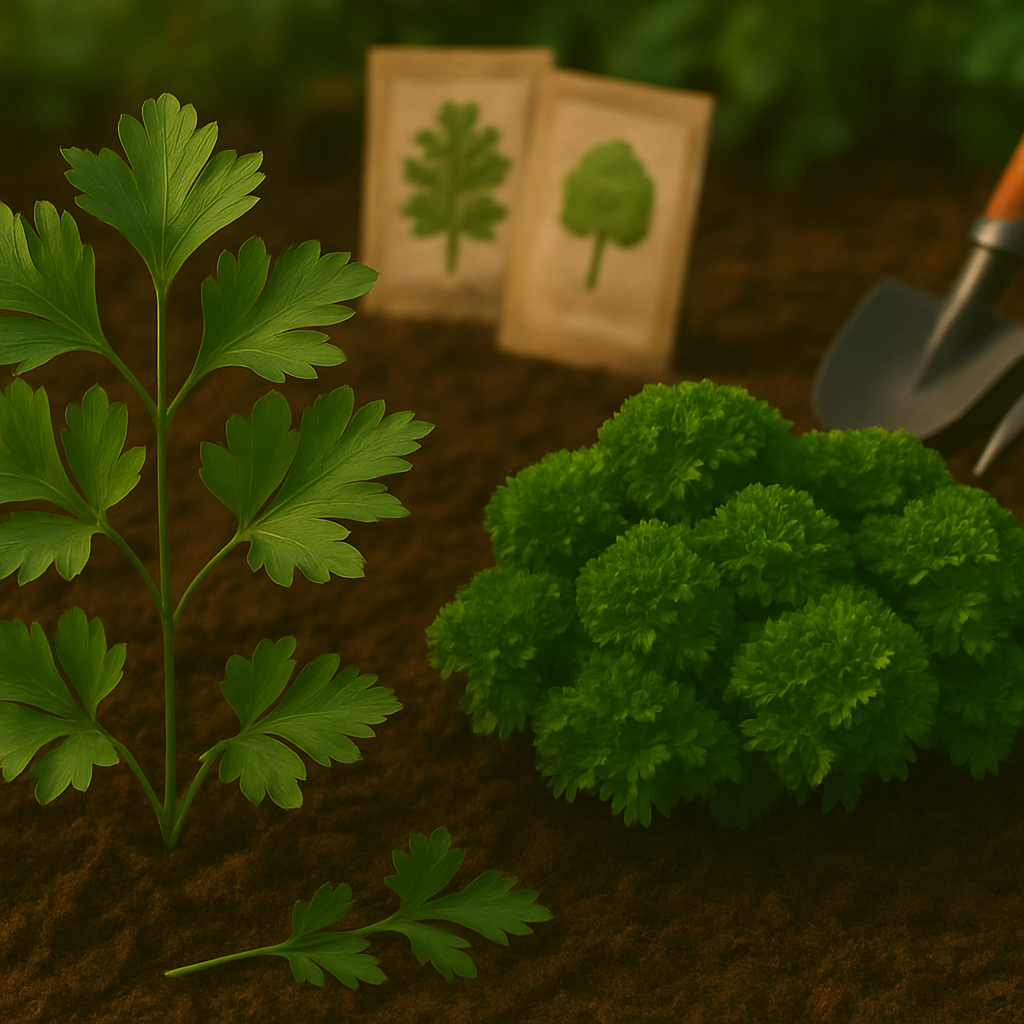
When starting your parsley garden, choosing between flat-leaf (Italian) and curly-leaf varieties makes a real difference. Flat-leaf parsley is favored by cooks for its bold, robust flavor and tender texture—perfect for recipes where parsley is a key ingredient, like chimichurri or tabbouleh. It’s also easier to chop and mix into salads or sauces.
Curly-leaf parsley, on the other hand, is milder and a bit tougher, making it the classic choice for garnishes since it holds its shape and adds a decorative touch to plates. Both types thrive best in mild climates with temperatures between 50–70°F (10–21°C).
Parsley loves full sun but tolerates light partial shade, especially in hot regions, so pick a spot that gets at least six hours of sunlight daily. Ensure there’s well-drained, rich soil, and leave about 6–8 inches between each plant to give them room to grow bushy.
In most climates, the best time to plant parsley outdoors is in early spring once the soil warms, but you can get a jump-start by sowing seeds indoors 6–8 weeks before the last frost date or by using healthy seedlings.
When buying seeds, check the packet expiry and choose a fresh batch from a reputable source—older seeds often mean lower germination. Look for seedlings with bright green leaves and sturdy stems; avoid any that appear wilted, yellowed, or root-bound in their containers.
Starting with quality seeds or transplants is your best bet for a lush, productive herb garden all season long.
Preparing Soil and Sowing Parsley Seeds
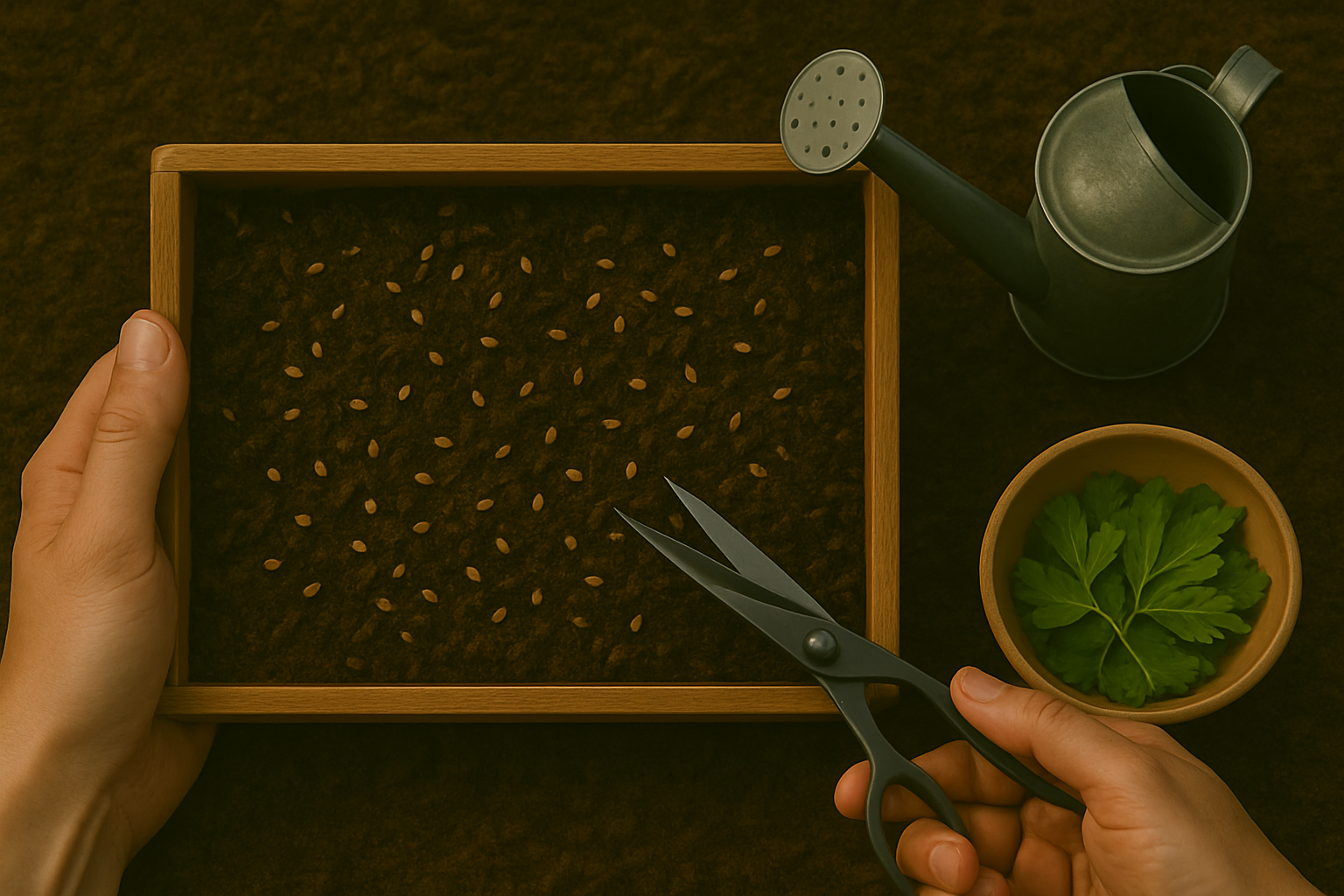
To set your parsley up for success, start with soil that’s rich in organic matter, loose, and drains well. Heavy clay or compacted patches can slow growth and cause root issues. Parsley thrives in beds where the pH ranges from slightly acidic to neutral (about 6.0–7.0). Testing your soil with an inexpensive kit can help, and if needed, add lime to raise the pH or compost to boost nutrients and improve texture.
For outdoor sowing, wait until after your last frost, then sow seeds directly into prepared beds about ¼ inch deep and 6-8 inches apart, lightly covering them with soil. Alternatively, start parsley indoors by planting seeds in small cells or pots 8-10 weeks before your region’s last frost. Transplant young seedlings outside once they reach about 2 inches tall and the threat of frost has passed. This way, you get a jump on the growing season.
Be patient: parsley seedlings can be notoriously slow to sprout, sometimes taking up to four weeks to emerge. To speed things up, soak seeds in warm water for 12-24 hours before sowing; this softens their tough outer shell and boosts germination. Keep the soil consistently moist but not soggy during this period. If conditions are dry, cover the seeded area with a thin layer of mulch or burlap to conserve moisture and protect the delicate seeds.
With these steps, you’ll overcome parsley’s tricky start and enjoy lush, flavorful plants all season.
Planting and Basic Care for Parsley Outdoors
When planting parsley outdoors—whether in garden beds or containers—choose a spot that gets partial to full sun. Parsley loves light but can tolerate a bit of shade. Make sure the soil is rich, well-draining, and loosened to about 6-8 inches deep. For best results, plant seeds or seedlings about 6-8 inches apart, giving enough room for leafy growth and good air circulation to minimize disease.
Sow seeds just 1/4 inch deep and cover them lightly with soil. Parsley is slow to germinate and needs close contact with moist earth. Water parsley regularly, keeping the soil consistently moist but never soggy. Adding a layer of straw or compost mulch will help retain moisture and suppress weeds.
Check frequently for weeds and hand-pull them before they compete with your parsley for nutrients. When it comes to feeding, mix in aged compost or a slow-release organic fertilizer before planting, then supplement with diluted fish emulsion or seaweed extract every 4-6 weeks during the growing season for lush, green leaves.
Remove any yellowing leaves or flowering stalks promptly to encourage fresh growth. By focusing on these basics—proper spacing, consistent moisture, weed control, mulching, and gentle organic feeding—you’ll enjoy a healthy parsley crop all season long, perfect for tucking sprigs into recipes or harvesting for fresh garnish.
Common Parsley Problems and How to Prevent Them
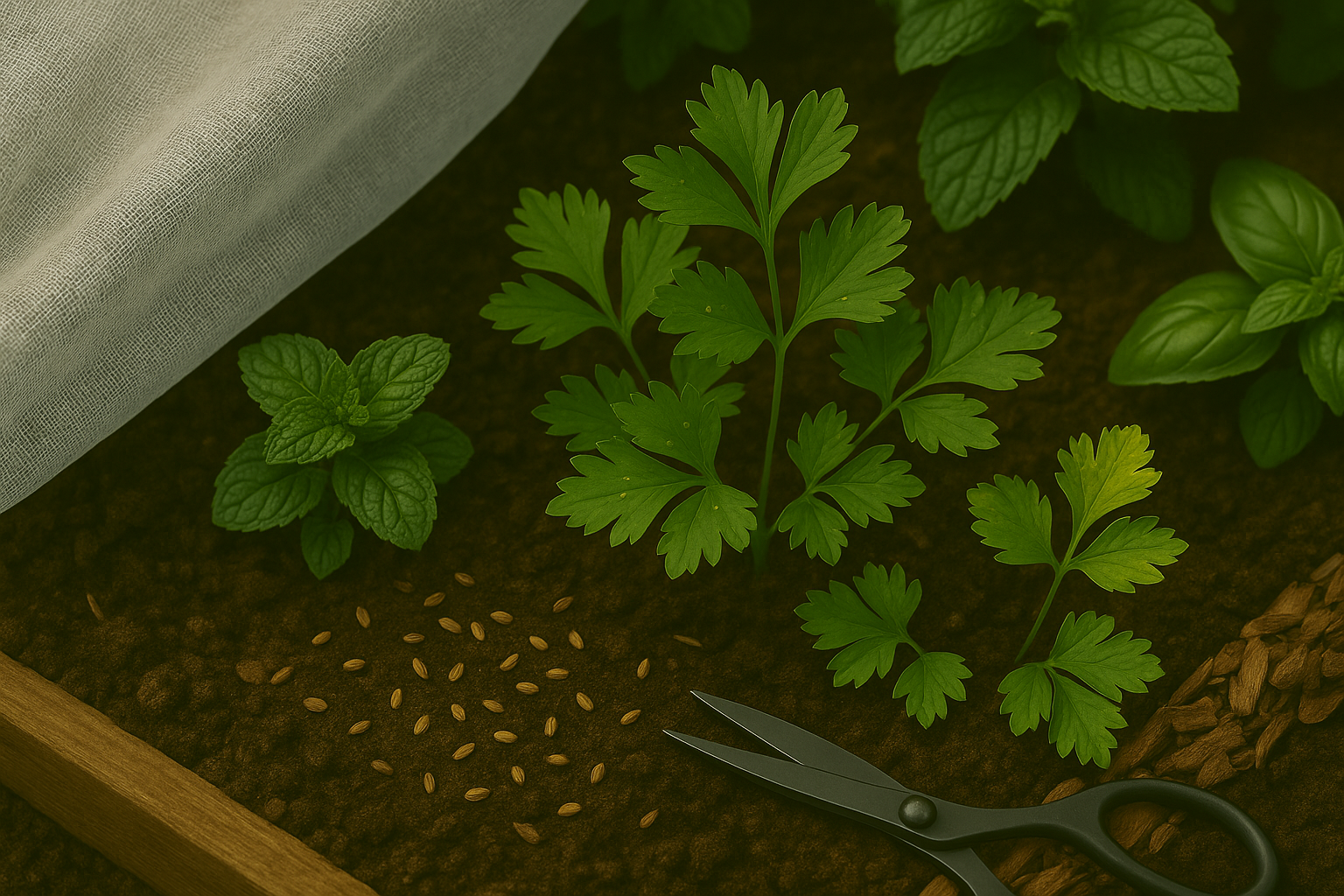
Parsley can fall victim to a few pesky visitors and diseases. Aphids suck the sap from delicate leaves, leaving behind sticky residue and distorted growth. Root rot is another common problem, especially in heavy or waterlogged soil, causing yellowing, wilting, and mushy roots.
Parsley also shares some pests with its carrot cousins, like parsley worms (the larval stage of black swallowtail butterflies) and carrot flies, which nibble at leaves and roots.
Prevent these issues by ensuring well-drained soil, rotating your crops each season, and spacing plants to encourage airflow. Try planting parsley alongside aromatic herbs like mint or basil, as their scents can deter some insects.
Natural remedies include spraying aphids with a mix of water and mild soap, handpicking worms when you spot them, and using floating row covers to keep flies at bay.
Spot trouble early by inspecting the undersides of leaves for clusters of tiny pests, yellow patches, or chewed edges. If leaves show black or brown spots, trim away affected areas and consider reducing watering.
Removing plant debris from the garden bed at season’s end is another practical way to limit disease spread. Quick action and preventive care will help your parsley stay healthy and productive all season.
Harvesting and Storing Parsley for Freshness
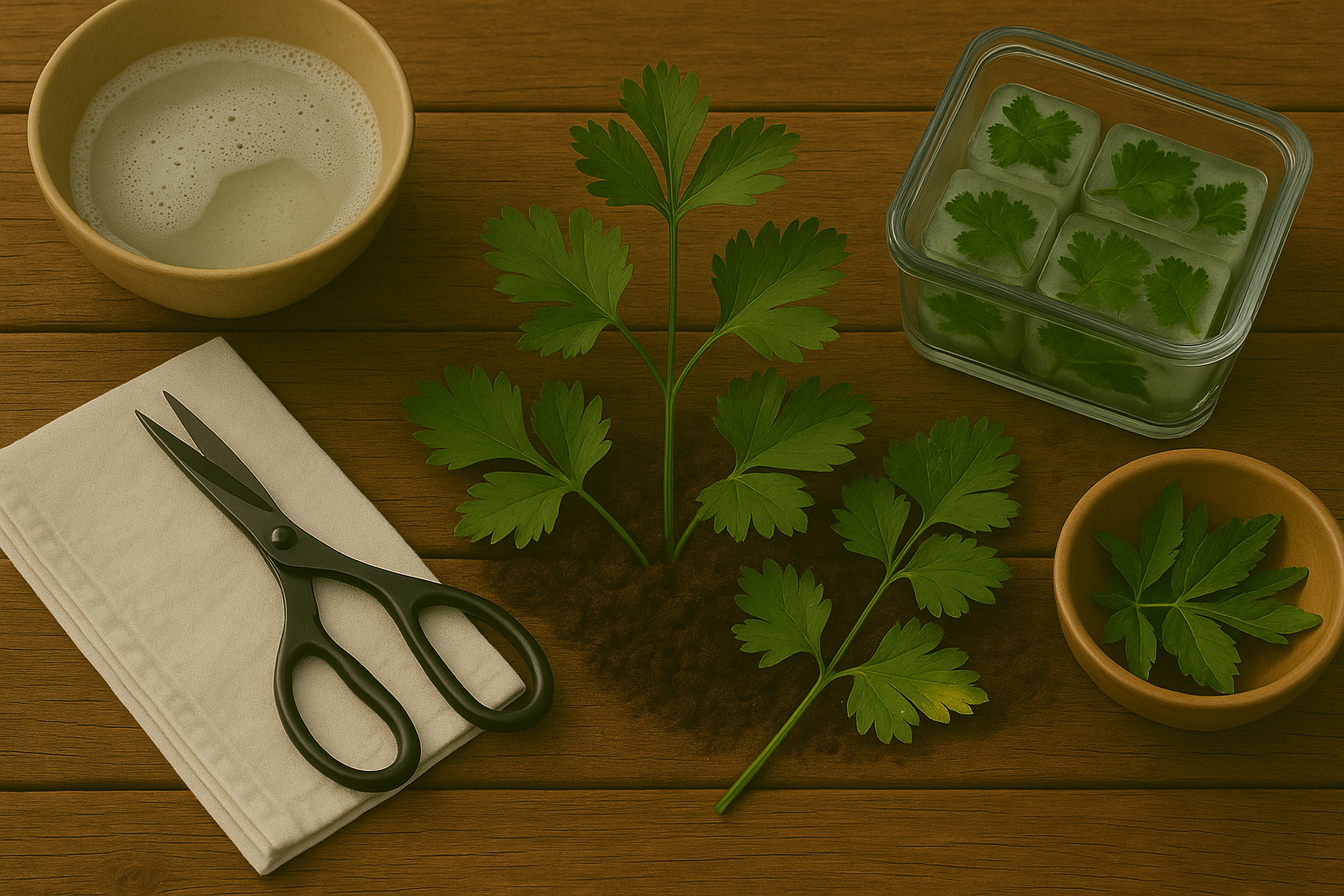
For the freshest parsley, harvest in the morning once the dew has dried but before the midday sun, when the leaves are most flavorful. To keep your plant thriving, cut the outer stems first, snipping at the base near the soil with clean scissors or garden shears. Avoid pulling leaves or cutting more than a third of the plant at a time, so parsley continues producing.
For maximum yield, use a “cut and come again” approach, regularly harvesting mature stems throughout the season. Once picked, rinse leaves gently and pat them dry.
To store fresh parsley, wrap it loosely in a damp paper towel and place it inside a plastic bag in the fridge—this helps retain crispness for up to a week. For longer preservation, chop and freeze parsley in ice cube trays with water or olive oil, perfect for tossing into soups and sauces later.
Alternatively, hang bunches upside down in a dry, well-ventilated space until crumbly, then store the dried leaves in an airtight jar for up to a year. Each technique keeps that garden-fresh flavor handy, making sure your hard work lasts well beyond harvest day.
Using Parsley from Your Garden
Fresh parsley from your garden is a small but mighty way to add extra flavor and color to everyday meals. Simply snip a few leaves to toss into salads for a bright, herbal note, or sprinkle chopped parsley over roasted veggies, pasta, or grilled fish as a vibrant garnish.
It’s also an essential ingredient in classics like tabbouleh and chimichurri—just mix it with olive oil, lemon juice, garlic, and salt for a quick sauce.
To preserve your harvest, consider chopping and freezing parsley in ice cube trays with a bit of water or olive oil. This lets you add garden-fresh flavor to soups or stews all year round.
If you find yourself with an abundance, try making parsley pesto by blending it with nuts, Parmesan, and oil—delicious on bread or pasta.
Don’t be afraid to experiment: a handful of parsley can instantly refresh almost any dish, encouraging creativity in your kitchen.
